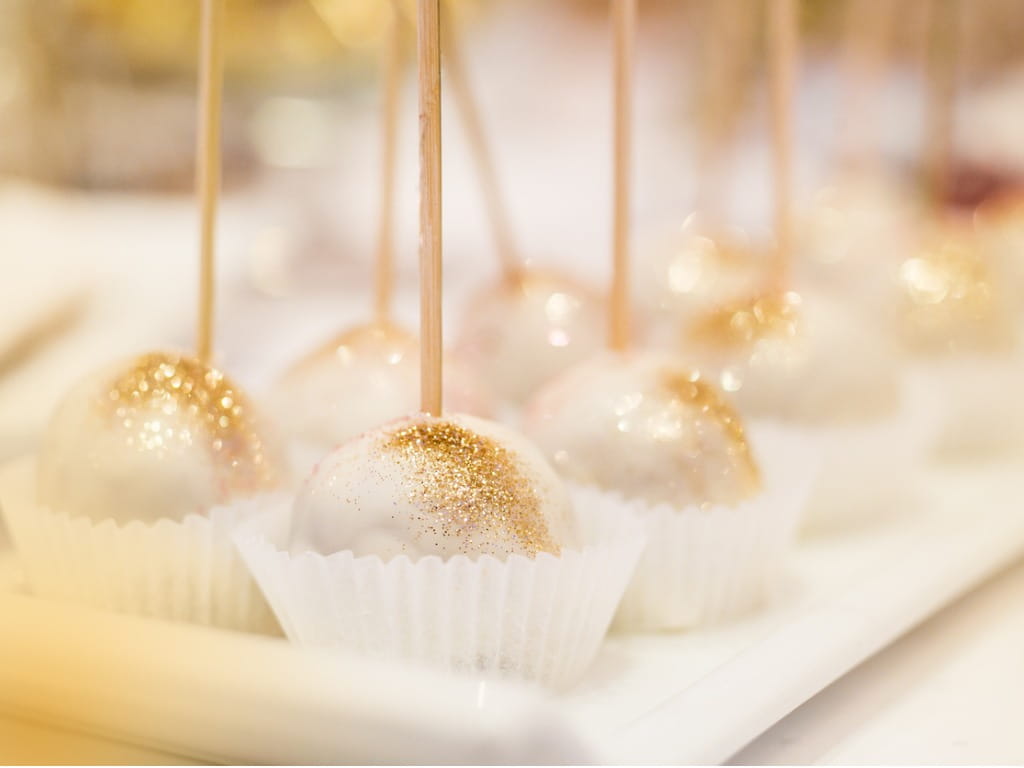Cake Decorating "Luster Dust" Can Be Poisonous

The Bottom Line
Cake decorations such as luster dust often add sparkle or color to sweet confections. While some cake decorating products are edible, others may contain heavy metals that can cause poisonous effects when swallowed.

The Full Story
Television shows such as “Cake Boss” and “Ace of Cakes” have exposed us to the elaborate and entertaining world of cake decorating. In these shows, bakery artists create exceptionally detailed and edible cakes, to the delight of their customers and TV audiences. While many professional cake artists have an educational background in culinary arts, aspiring bakers can learn to decorate cakes by using the internet as a guide. Cake decorating supplies, including fondant, buttercream frosting, sprinkles, and edible dust, can also be purchased at grocery retailers or craft stores.
Luster dust (also called petal dust, pearl dust, sparkle dust, or sparkle powder) is a popular product used in cake decorating. Luster dust is a tasteless powder that resembles highly pigmented eye shadow. When sprinkled or brushed onto the outside of cakes, cake pops, and cupcakes, luster dust adds color, iridescence, and sparkle to these decadent treats. Various brands and colors of luster dust are available, and many of these products are labeled as edible or non-toxic, suggesting that they are safe to eat.
Unfortunately, all that glitters is not gold. In 2018, six children from Rhode Island developed vomiting and diarrhea after attending a birthday party. The symptoms occurred between 30 minutes to 10 hours after eating a decorated birthday cake at the party. The birthday cake had been ordered from a local bakery. Since partygoers who did not eat the cake’s frosting remained unaffected and did not develop gastrointestinal symptoms, the frosting was suspected to be the cause of the illness. The cake was frosted with rose-colored rosette flowers and rose gold-colored luster dust had been applied to the frosting. The luster dust container was examined at the bakery and found to be labeled as “nontoxic,” “nonedible,” and “for decoration only.” Further investigation revealed that the luster dust had been imported from a company that marketed the product as a metallic pigment for floor coverings and other consumer products. Analysis of the luster dust by the health department found that it contained high levels of copper. A closer inspection of the bakery found multiple luster dust formulations; these were tested, and some were found to contain high levels of other heavy metals including lead, manganese, aluminum, and barium. Based on their symptoms and the presence of elevated amounts of copper in the cake’s frosting, the affected patients in this case were diagnosed with acute copper poisoning. Fortunately, all of the patients recovered, although some of them required treatment in an Emergency Department or hospitalization.
Copper is a trace element and an essential factor in many enzymatic reactions in the human body. Small amounts of copper are naturally present in low levels in many foods, including shellfish, avocados, and chocolate. While exposure to low levels of copper is not dangerous, swallowing higher amounts of copper can cause gastrointestinal distress and ulcers, bloody urine, and anemia. Blue-tinged or turquoise-colored vomit has been reported to occur in some cases of copper poisoning. In severe cases, kidney and liver failure, shock, and death can occur. Treatment of acute copper poisoning involves administration of intravenous fluids and correction of electrolyte abnormalities. Severely poisoned patients who require hospitalization may also be treated with chelating agents.
If you suspect food poisoning or heavy metal poisoning, get help online at webPOISONCONTROL or call 1-800-222-1222. Both options are free, and available 24 hours a day.
Kelly Johnson-Arbor, MD
Medical Toxicologist
Poisoned?
Call 1-800-222-1222 or
Prevention Tips
- If a cake decorating product label includes the words “for decorative purposes only” or “nontoxic”, do not eat it. Remove it from the cake before serving or eating the cake. If the label says “edible”, it is likely safe to consume the product.
- Before eating a product, review its list of ingredients closely. Do not eat the product if ingredients are not listed.
- Check the FDA website for information on product recalls, market withdrawals, and safety alerts.
This Really Happened
A 1-year-old child was found to have an elevated blood lead level. When the state health department performed an inspection of the child’s home to search for a source of lead, they found a jar of yellow primrose petal dust that had recently been used to decorate a homemade birthday cake for the child. The petal dust had been purchased from a Florida-based cake decorating company, and was labeled as “nontoxic” and “made in USA.” Health department investigators tested the jar’s contents and found that the petal dust contained 25% lead. The health department notified the United States Food and Drug Administration and also issued a press release advising consumers to not apply primrose petal dust to any food products.For More Information
Food Safety News. CDC study investigates luster dusts baking decorations’ connection to poisonings [accessed 11.2.21].References
Cake journal. What is Luster Dust and How is it Used? [accessed 11.2.21].
The spruce eats. What is luster dust? [accessed 11.2.21].
Poisoned?
Call 1-800-222-1222 or
Prevention Tips
- If a cake decorating product label includes the words “for decorative purposes only” or “nontoxic”, do not eat it. Remove it from the cake before serving or eating the cake. If the label says “edible”, it is likely safe to consume the product.
- Before eating a product, review its list of ingredients closely. Do not eat the product if ingredients are not listed.
- Check the FDA website for information on product recalls, market withdrawals, and safety alerts.
